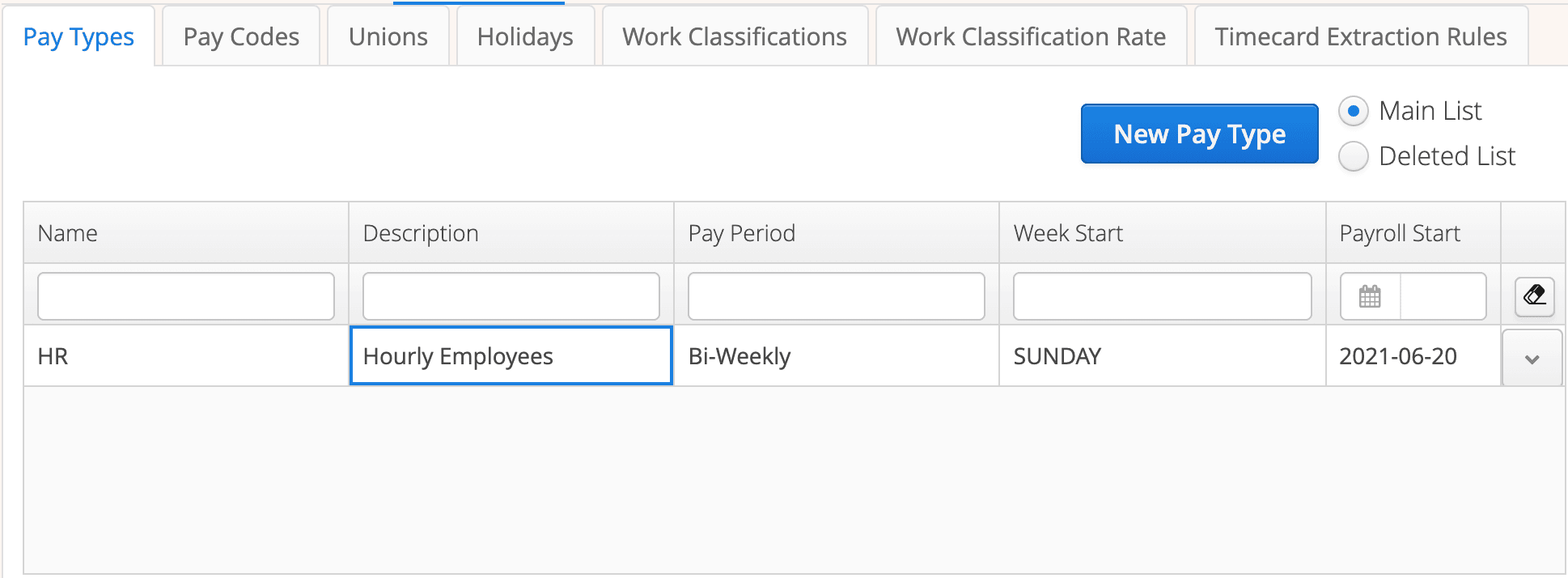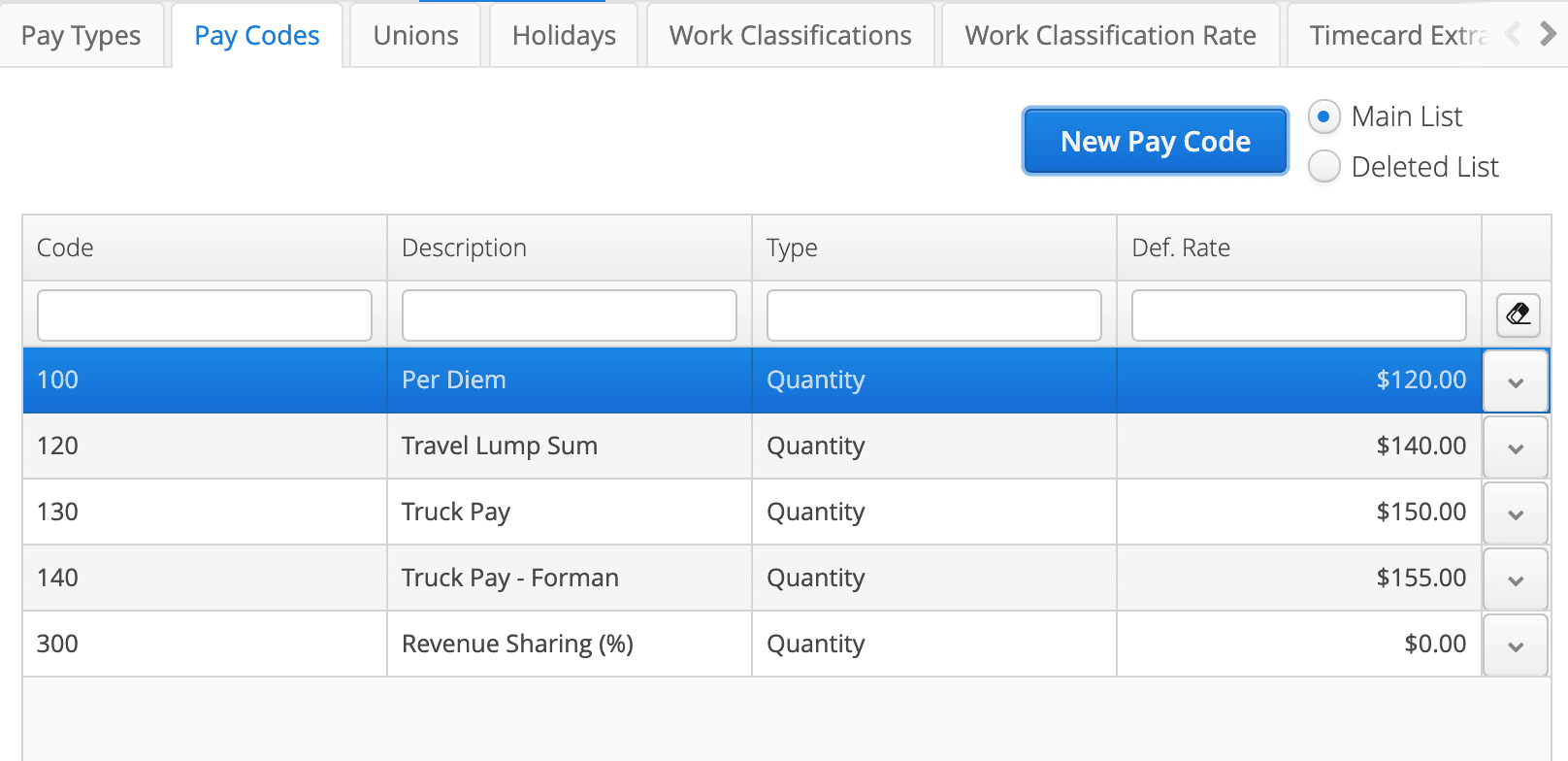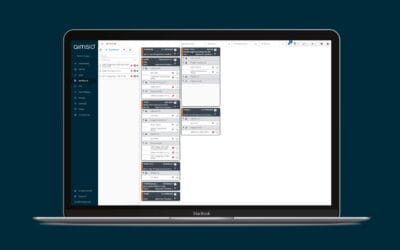One of the main reasons companies choose to use Aimsio is to capture time in the field. With hundreds, sometimes thousands of people working on your projects, a reliable time tracking system is a necessity in order to accurately run payroll.
But payroll isn’t the only reason to use a software like Aimsio. Field work is your source of revenue, which means without a reliable way to track billable time & material (T&M), you run the risk of going over budget on projects. Time is a major indicator of the overall health of a project. For example, how do your budgeted labor hours stack up compared to the actual labor hours on a project? If you’ve budgeted 300 hours, and you’re now halfway through the project but you’ve already racked up 250 actual hours, you know that your project will likely go over budget.
Where things get tricky is that the rate you bill out a labor hour is likely different from the rate you use to pay employees for payroll purposes. In other words, you might charge your customer $200/hour for a specific employee’s time, but you would only pay that employee $50/hour. Aimsio is a software that allows you to set different billing rates vs. payroll rates AND create filters so only specific employees can view these rates.
All of this comes together in Aimsio’s Resource Costing module to ensure your team is set up for success when it comes to T&M and Payroll. This article explores how Aimsio’s Resource Costing module makes it easy to track T&M and complete Payroll.
What is Resource Costing?
Resource costing, as the name suggests, is about properly calculating the cost of any resource. At Aimsio, when we talk about resource costing, we’re referring to calculating the cost of resources in the following categories:
- Labor
- Equipment
- Material
- Miscellaneous e.g. Consumables
Entering Raw Data: Using Aimsio to Set Rates, Fill out Timecards, and More
The Labor category tends to be the most complicated of all. Why? Because time is often broken down into Regular Time (RT), Overtime (OT), Double Time (DT) and Straight Time (ST). Additionally, people need to be paid for things like Personal Truck Pay or Stat Holiday Pay. And to further complicate the matter, there are eligibility rules, union rules, and varying rules for different provinces and states. That’s why we’re mostly focusing on Labor for this article, because it can be the source of major headaches for Project Managers and Payroll Specialists alike.
At Aimsio, when we set up your account, we use eight different concepts to set up your resource costing. Your account may use one, some, or all of the following concepts but we’ve listed them all here you so can pick out the ones that are relevant to you:
1. Payroll Types
The highest level of grouping certain costs e.g. Hourly, Salary, and Equipment. This is also where we determine the frequency of your payroll period (weekly, bi-weekly, semi-monthly, etc.) 
2. Unions
This is where the rules for OT and DT are defined. In the screenshots below, you can see how this particular set up is different for employees in Alberta vs. British Columbia.
Alberta Union Example

British Columbia Union Example

With unions, we can handle configurations for the following categories:
- Daily Max RT: The maximum number of hours that can be considered regular hours in a day
- Daily Max OT: The maximum number of hours that can be considered as overtime hours in a day
- Daily Time Bumping: The days in which an hour automatically starts from OT or DT
- Time Bumping Period: The hours worked in a week. For example, the first 40 hours worked in a week are RT. This is important to establish because different provices/states have different labor laws. For example, here is a scenario where a person worked 98 hours in one week. Based on how Alberta and British Columbia’s different labor laws, the RT/OT/DT breakdown is different.
98 Hour Work Week in Alberta

98 Hour Work Week in BC

- OT/DT Factor: The OT/DT is calculated by multiplying the base rate by the OT/DT Factor
- RT/OT/DT Burden: Overhead costs (e.g. CPP, EI) that are not handled in Aimsio but that are needed for job costing
- Cross Union Work: Rules for when someone belongs to two or more unions
We won’t get into the exact way we calculate each of the above categories. All you need to know is that if you choose Aimsio for your Resource Costing, we’ll find a way to accurately capture time in the field for you.
3. Holidays
This is where we define the rules for holidays. For example, in Canada employers are required to pay employees their average day pay whether or not they actually worked on the statutory holiday. However, in the U.S., it is based on an agreement between the employer and the employee. When setting up your account, you tell us how it’s done and we’ll make sure it works that way in Aimsio.
4. Pay Codes
This section is all about those lump sum costs that need to be captured under a Pay Code.

5. Work Class and Work Class Rates
This is where you can set different rates for different positions. For example, you may have a different rate for Foremans working day shifts vs. Foremans working night shifts.
6. Timecards
Timecards are basically a cost transaction that gets posted in a pay period. Timecards must have links to an Employee, Equipment, Union, Pay Type, Job Order, Phase, Pay Code or Work Class.
7. Timecard Extraction Rules
This allows us to automate and streamline the extraction of timecards.
8. Payroll Periods
We all know what these are because we are all paid on some sort of schedule: Weekly, Bi-Weekly, Semi-Monthly, or Monthly. Once the payroll period has passed, you can close the period and then no timecards can be further modified. Once a payroll period is closed, you can download PDFs of timecards or you can directly email files to employees.
If everything we just talked about makes no sense, don’t worry. When we set up your Aimsio account, we’ll walk through each step and make sure you have everything you need to accurately capture T&M and report on jobs.
Making Sense of the Data
Once your account is set up and ready to use, workers can start filling out timecards and your raw data will start to pile up. What now?
Head over to your “Raw Data” tab to extract payroll timecards. Aimsio is not a payroll processing software, but it provides most of the data you need to complete payroll. This means that you need to extract timecards and upload them to a payroll system, like ADP. 
In addition to having all of the raw data needed for payroll purposes, you can also run the numbers to determine the overall health of your projects. This is where the different billable vs. payroll rates come into play.
So whether you’re a Payroll Specialist or a Project Manager, the Resource Costing module provides you with tons of data you need to complete your job.
And the best part? One source of truth.
Open up Aimsio, view the data, and be confident that your entire organization is using the same numbers. No more disconnected spreadsheets, tracking down rogue timesheets, or asking other departments for labor costs.
FAQs
Here are a few of the most frequently asked questions that we get about our Resource Costing and Payroll functions:
1. Can I have employees with day rates and hourly rates in the same pay period?
Yes.
2. If I pay someone a daily rate and I don’t want their hours to be included in the OT/DT breakdown, is that possible?
Yes. It can be configured to only post a timecard with a daily pay code.
3. Can I have more than one per diem per employee?
Yes, Per Diems should be defined as Pay Codes. You can have as many as you need.
4. What about other bonuses?
Yes, if the bonus is determined based on rules (e.g. If someone used their own truck, they get a truck pay), then it will be defined as a Pay Code.
If the bonus should be paid automatically every pay period (e.g. Cell Phone Allowance), this will go under Standard Earnings & Reductions.
5. Can I pay Travel Time as a lump sum pay, regardless of the hours?
Yes, define the Travel Time as a Pay Code.
6. Can I exclude Travel Time from Overtime calculations and pay them separately based on the hours?
Yes.
7. Can I include Travel Time in the Overtime calculations (opposite to above)?
Yes.
8. Can I pay a different rate for Travel Time?
Yes.




